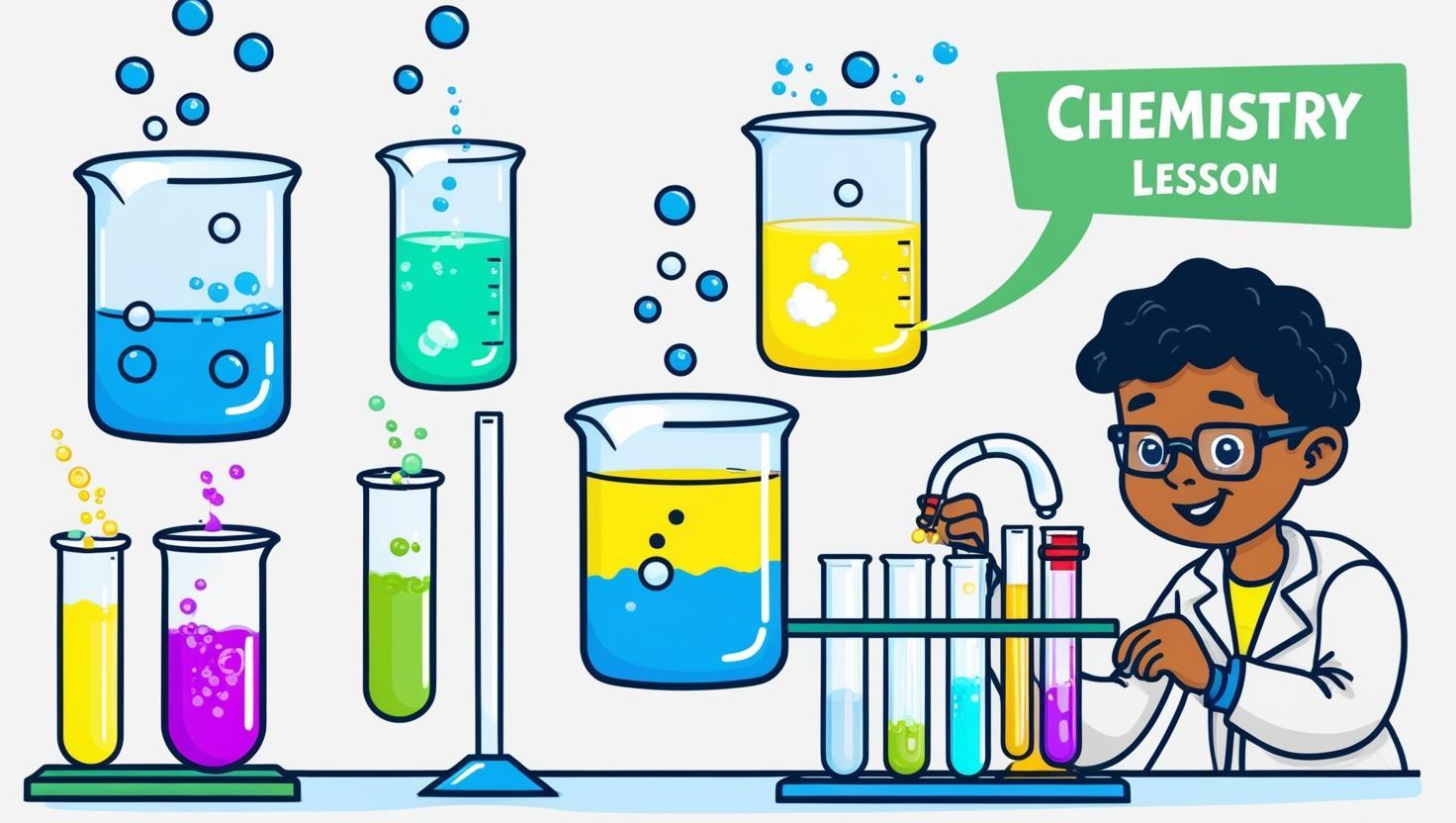Get In Touch

By - Ananya Chidanand
3/17/2025
23
Chemical Reactions: The Magic Behind Everyday Life
Ever wondered how things change? How does food cook, metal rust, or a fire burn? The answer lies in the fascinating world of chemical reactions. These reactions are the foundation of everything around us, from the tiniest cells in our bodies to the vastness of the universe.
What are Chemical Reactions?
At their core, chemical reactions involve the rearrangement of atoms and molecules. When substances interact, their chemical bonds break and new ones form, leading to the creation of entirely new substances with different properties.
Writing the Language of Change: Chemical Equations
To describe these reactions, we use chemical equations. These equations are like recipes, listing the ingredients (reactants) and the final product(s).
Word equations are a simple way to describe reactions using words. For example:
Hydrogen + Oxygen → Water
Chemical equations use chemical formulas to represent the substances involved. For example:
2H₂ + O₂ → 2H₂O
Balancing the Equation: The Law of Conservation of Mass
One of the fundamental laws of chemistry is the law of conservation of mass. This law states that matter cannot be created or destroyed in a chemical reaction. To ensure this, we balance chemical equations, making sure that the number of atoms of each element is the same on both sides of the equation.
Types of Chemical Reactions: A World of Diversity
Chemical reactions come in various forms, each with its unique characteristics:
Combination reactions: Two or more substances combine to form a single product.
Example: 2Na + Cl₂ → 2NaCl
Decomposition reactions: A single substance breaks down into simpler products.
Example: 2H₂O → 2H₂ + O₂
Displacement reactions: One element replaces another in a compound.
Example: Zn + CuSO₄ → ZnSO₄ + Cu
Double displacement reactions: Ions are exchanged between reactants.
Example: AgNO₃ + NaCl → AgCl + NaNO₃
Redox reactions:Involve the transfer of electrons between substances.
Example: 2Fe₂O₃ + 3C → 4Fe + 3CO₂
Chemical Reactions in Daily Life: The Good and the Bad
Chemical reactions are not confined to laboratories; they play a crucial role in our everyday lives:
Corrosion: The gradual destruction of materials, especially metals, due to reactions with their environment. Rusting of iron is a common example.
Rancidity:The spoilage of food caused by oxidation reactions, leading to unpleasant odors and flavors.
Fun Experiment: The Baking Soda Volcano
Materials:
1. Baking soda
2. Vinegar
3. Dish soap
4. Food coloring (optional)
5. A plastic bottle or container
Instructions:
1. Place the bottle in a safe location.
2. Add baking soda, dish soap, and a few drops of food coloring to the bottle.
3. Slowly pour vinegar into the bottle.
4.Stand back and watch the "volcano" erupt!
The Science Behind It:
The reaction between baking soda (sodium bicarbonate) and vinegar (acetic acid) produces carbon dioxide gas, which creates pressure and causes the mixture to erupt like a volcano.
Conclusion
Chemical reactions are an integral part of our world, shaping everything from the smallest organisms to the largest structures. By understanding these reactions, we gain a deeper appreciation for the magic and complexity of the universe around us.
Check out our other posts!